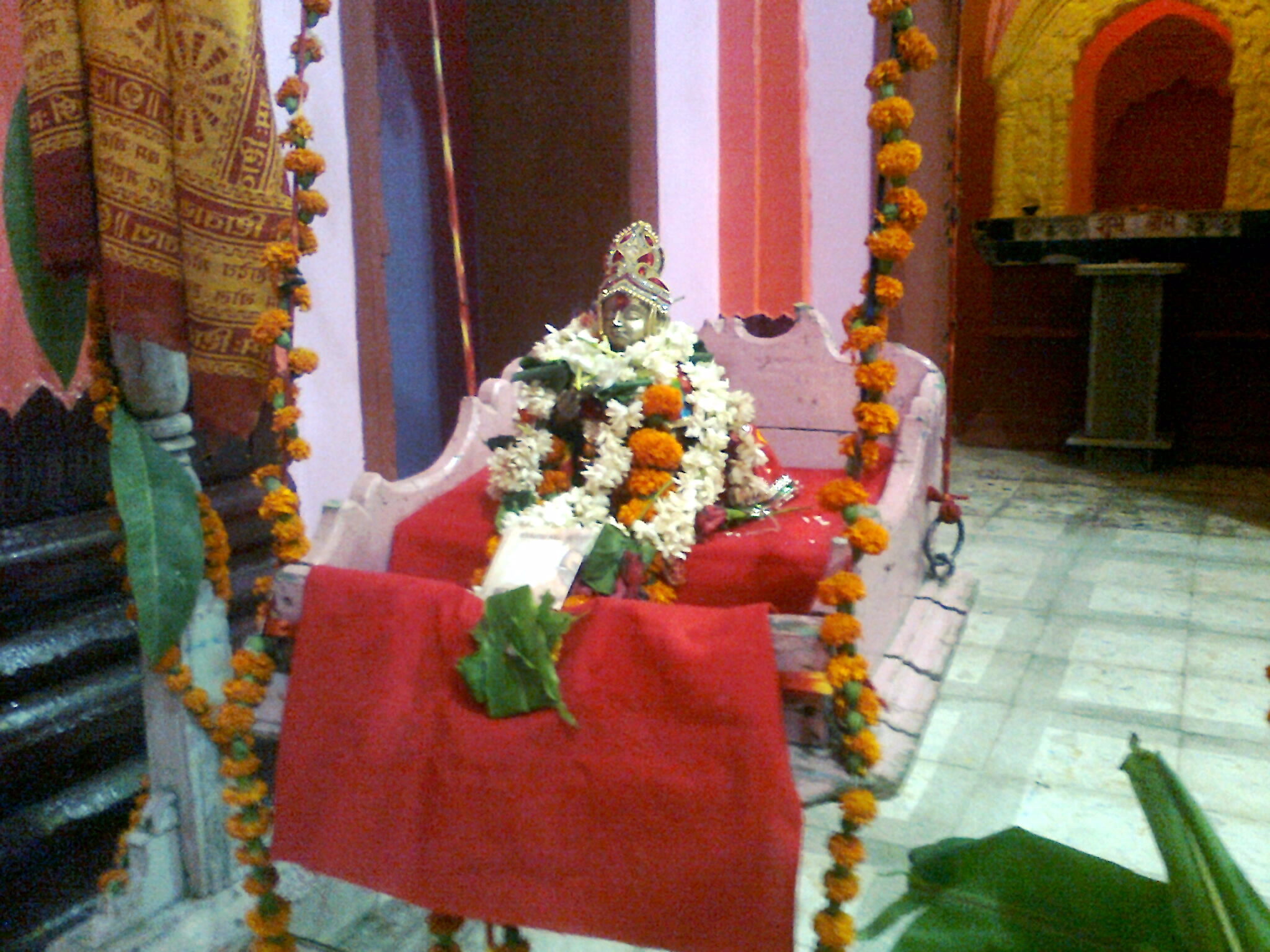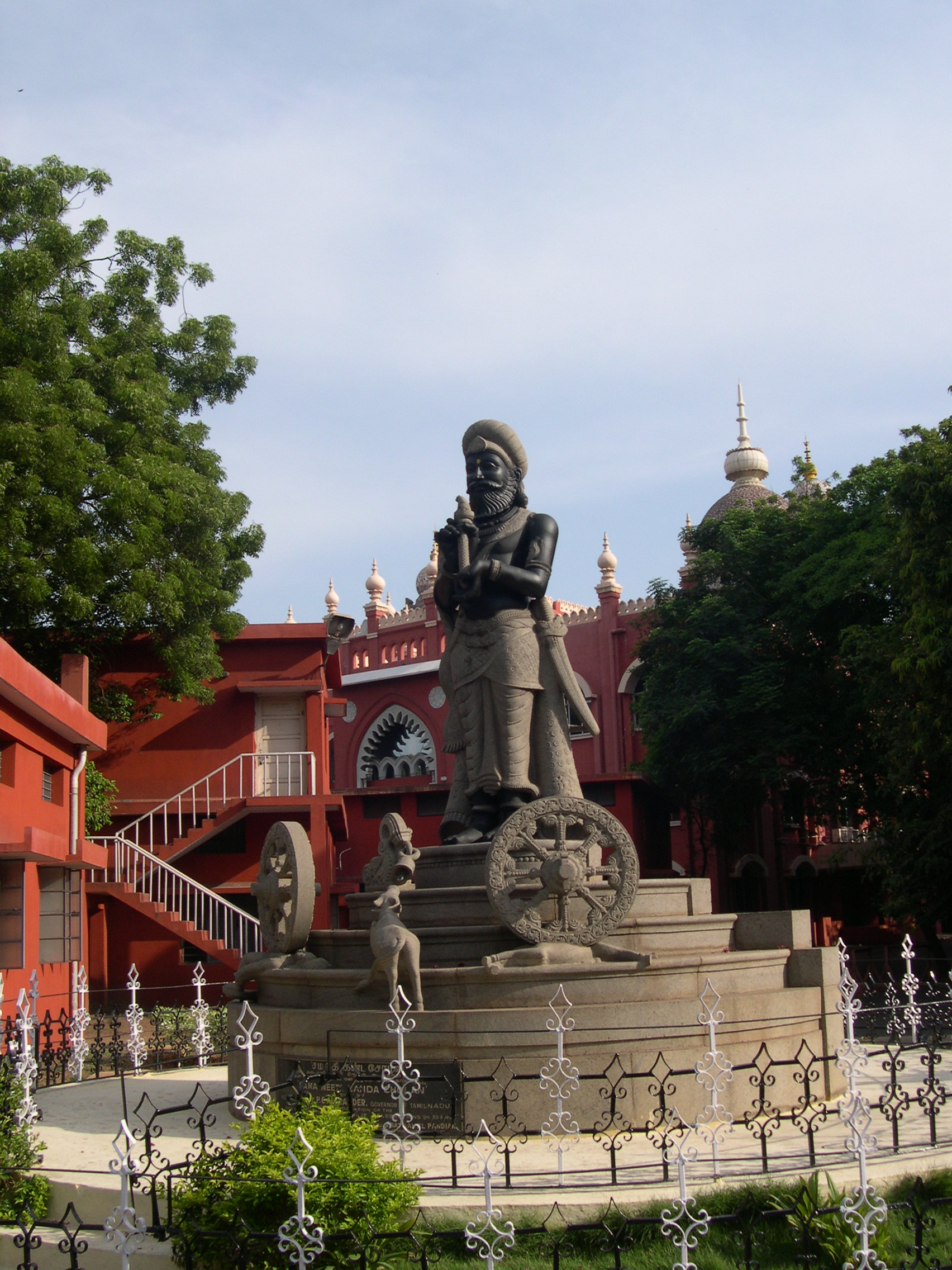|
Ayodhya Mandapam
Ayodhya Mandapam is a common meeting hall type of building-structure specifically made for the purpose of ''sath-sangamam'' (association of like-minded or common interest on religious development/discourses) at West Mambalam, Chennai, India. The ''mandapam'' is managed by Sri Ram Samaj. who also operate Mithilapuri Kalyana Mandapam - a marriage hall, Sri Sitaram Vidyalaya school and Gnanavapi - a place for conducting funeral rites. The Mandapam was constructed in 1964 and initially it was open to the Iyers of Mambalam (a set of Brahmin Community). Later it was made available for all the other communities. Till now it is known for the association/meeting point for Brahmin community. Periodic discourses on Vedas and Upanishads as well as several cultural meet-outs are handled throughout the year. In the month of March–April of every year, programmes in connection to ''Rama Navami Maha-utsav'' is very special at Ayodhya Mandapam. In January 2014, this society was taken over by ... [...More Info...] [...Related Items...] OR: [Wikipedia] [Google] [Baidu] |
Ayodhya Mandapam
Ayodhya Mandapam is a common meeting hall type of building-structure specifically made for the purpose of ''sath-sangamam'' (association of like-minded or common interest on religious development/discourses) at West Mambalam, Chennai, India. The ''mandapam'' is managed by Sri Ram Samaj. who also operate Mithilapuri Kalyana Mandapam - a marriage hall, Sri Sitaram Vidyalaya school and Gnanavapi - a place for conducting funeral rites. The Mandapam was constructed in 1964 and initially it was open to the Iyers of Mambalam (a set of Brahmin Community). Later it was made available for all the other communities. Till now it is known for the association/meeting point for Brahmin community. Periodic discourses on Vedas and Upanishads as well as several cultural meet-outs are handled throughout the year. In the month of March–April of every year, programmes in connection to ''Rama Navami Maha-utsav'' is very special at Ayodhya Mandapam. In January 2014, this society was taken over by ... [...More Info...] [...Related Items...] OR: [Wikipedia] [Google] [Baidu] |
West Mambalam
West Mambalam is a residential and commercial area in Chennai, India. It is known for its shops, bazaars and Hindu temples. It is bounded by Kodambakkam to the north and Saidapet to the south. T. Nagar and Nandanam stretch all along its eastern frontiers while Ashok Nagar lies to its west. The Ayodhya Mandapam is an important landmark. Etymology Mambalam is believed to have derived its name from the existence of Maha vilvam trees in the locality, which in due course become ''Mavilam'' and then ''Mambalam'' In ancient times it was known as ''Mylai mel ambalam'' (place located on the west of Mylai). Then it changed to mel-ambalam. Then mel(top) changed into west and ambalam changed into Mambalam. With the railway line dividing the locality into East Mambalam and West Mambalam, and with East Mambalam having renamed as "Thyagaraya Nagar," the western part continues to be known as "West Mambalam" today. History Prior to its inclusion in the then city of Madras, Mambalam was a v ... [...More Info...] [...Related Items...] OR: [Wikipedia] [Google] [Baidu] |
Chennai
Chennai (, ), formerly known as Madras ( the official name until 1996), is the capital city of Tamil Nadu, the southernmost Indian state. The largest city of the state in area and population, Chennai is located on the Coromandel Coast of the Bay of Bengal. According to the 2011 Indian census, Chennai is the sixth-most populous city in the country and forms the fourth-most populous urban agglomeration. The Greater Chennai Corporation is the civic body responsible for the city; it is the oldest city corporation of India, established in 1688—the second oldest in the world after London. The city of Chennai is coterminous with Chennai district, which together with the adjoining suburbs constitutes the Chennai Metropolitan Area, the 36th-largest urban area in the world by population and one of the largest metropolitan economies of India. The traditional and de facto gateway of South India, Chennai is among the most-visited Indian cities by foreign tourists. It was ranked the ... [...More Info...] [...Related Items...] OR: [Wikipedia] [Google] [Baidu] |
India
India, officially the Republic of India (Hindi: ), is a country in South Asia. It is the seventh-largest country by area, the second-most populous country, and the most populous democracy in the world. Bounded by the Indian Ocean on the south, the Arabian Sea on the southwest, and the Bay of Bengal on the southeast, it shares land borders with Pakistan to the west; China, Nepal, and Bhutan to the north; and Bangladesh and Myanmar to the east. In the Indian Ocean, India is in the vicinity of Sri Lanka and the Maldives; its Andaman and Nicobar Islands share a maritime border with Thailand, Myanmar, and Indonesia. Modern humans arrived on the Indian subcontinent from Africa no later than 55,000 years ago., "Y-Chromosome and Mt-DNA data support the colonization of South Asia by modern humans originating in Africa. ... Coalescence dates for most non-European populations average to between 73–55 ka.", "Modern human beings—''Homo sapiens''—originated in Africa. Then, int ... [...More Info...] [...Related Items...] OR: [Wikipedia] [Google] [Baidu] |
Mandapa
A mandapa or mantapa () is a pillared hall or pavilion for public rituals in Indian architecture, especially featured in Hindu temple architecture. Mandapas are described as "open" or "closed" depending on whether they have walls. In temples, one or more mandapas very often lie between the sanctuary and the temple entrance, on the same axis. In a large temple other mandapas may be placed to the sides, or detached within the temple compound. Temple architecture In the Hindu temple the ''mandapa'' is a porch-like structure through the (''gopuram'') (ornate gateway) and leading to the temple. It is used for religious dancing and music and is part of the basic temple compound. The prayer hall was generally built in front of the temple's ''sanctum sanctorum'' (''garbhagriha''). A large temple would have many ''mandapa''. If a temple has more than one ''mandapa'', each one is allocated for a different function and given a name to reflect its use. For example, a ''mandapa'' ... [...More Info...] [...Related Items...] OR: [Wikipedia] [Google] [Baidu] |
Iyer
Iyers (also spelt as Ayyar, Aiyar, Ayer, or Aiyer) are an ethnoreligious community of Tamil-speaking Brahmin, Hindu Brahmins. Most Iyers are followers of the ''Advaita Vedanta, Advaita'' philosophy propounded by Adi Shankara and adhere to the Smarta tradition. This is in contrast to the Iyengar community, who are adherents of Sri Vaishnavism. The Iyers and the Iyengars are together referred to as Tamil Brahmins. The majority of Iyers reside in Tamil Nadu, India. Iyers are further divided into various denominations based on traditional and regional differences. Like all Brahmins, they are also classified based on their gotra, or patrilineal descent, and the Veda that they follow. They fall under the Pancha-Dravida, Pancha Dravida Brahmana classification of Brahmins in India. Apart from the prevalent practice of using the title "Iyer" as surname, Iyers also commonly use other surnames, such as Sāstri or Bhattar. Etymology Iyer (, ) has several meanings in Tamil language, Tam ... [...More Info...] [...Related Items...] OR: [Wikipedia] [Google] [Baidu] |
Veda
FIle:Atharva-Veda samhita page 471 illustration.png, upright=1.2, The Vedas are ancient Sanskrit texts of Hinduism. Above: A page from the ''Atharvaveda''. The Vedas (, , ) are a large body of religious texts originating in ancient India. Composed in Vedic Sanskrit, the texts constitute the oldest layer of Sanskrit literature and the oldest Hindu texts, scriptures of Hinduism. There are four Vedas: the Rigveda, the Yajurveda, the Samaveda and the Atharvaveda. Each Veda has four subdivisions – the Samhitas (mantras and benedictions), the Aranyakas (text on rituals, ceremonies, sacrifices and symbolic-sacrifices), the Brahmanas (commentaries on rituals, ceremonies and sacrifices), and the Upanishads (texts discussing meditation, philosophy and spiritual knowledge).Gavin Flood (1996), ''An Introduction to Hinduism'', Cambridge University Press, , pp. 35–39A Bhattacharya (2006), ''Hindu Dharma: Introduction to Scriptures and Theology'', , pp. 8–14; George M. Williams (2003) ... [...More Info...] [...Related Items...] OR: [Wikipedia] [Google] [Baidu] |
Upanishad
The Upanishads (; sa, उपनिषद् ) are late Vedic Sanskrit texts that supplied the basis of later Hindu philosophy.Wendy Doniger (1990), ''Textual Sources for the Study of Hinduism'', 1st Edition, University of Chicago Press, , pages 2-3; Quote: "The Upanishads supply the basis of later Hindu philosophy; they are widely known and quoted by most well-educated Hindus, and their central ideas have also become a part of the spiritual arsenal of rank-and-file Hindus." They are the most recent part of the Vedas, the oldest scriptures of Hinduism, and deal with meditation, philosophy, consciousness, and ontological knowledge; earlier parts of the Vedas deal with mantras, benedictions, rituals, ceremonies, and sacrifices.Gavin Flood (1996), ''An Introduction to Hinduism'', Cambridge University Press, , pp. 35–39A Bhattacharya (2006), ''Hindu Dharma: Introduction to Scriptures and Theology'', , pp. 8–14; George M. Williams (2003), Handbook of Hindu Mythology, Oxford Un ... [...More Info...] [...Related Items...] OR: [Wikipedia] [Google] [Baidu] |
Rama Navami
Rama Navami () is a Hindu festival that celebrates the birthday of Rama, the seventh avatar of the deity Vishnu. people from different parts of Jharkhand attended the world famous international Hazaribagh procession organized in the city every year on the occasion of Ram ramnavmi birt anniversary of Rama amid chants of Jai shri ram. Vaishnava tradition of Hinduism. The festival celebrates the descent of Vishnu as the Rama avatar, through his birth to King Dasharatha and Queen Kausalya in Ayodhya, Kosala. This festival is a part of the Chaitra Navaratri in the spring, and falls on the ninth day of the bright half (Shukla Paksha) of Chaitra, the first month in the Hindu calendar. This typically occurs in the months of March or April by the Gregorian calendar. Rama Navami is an optional holiday for government employees in India.Holiday Calendar [...More Info...] [...Related Items...] OR: [Wikipedia] [Google] [Baidu] |
HR & CE
The Hindu Religious and Charitable Endowments Department of the Government of Tamil Nadu manages and controls the temple administration within the state. The Tamil Nadu Hindu Religious and Charitable Endowments Act XXII of 1959 controls 36,425 temples, 56 mutts or religious orders (and 47 temples belonging to mutts), 1,721 specific endowments and 189 trusts. History In 1923, ''Madras Hindu Religious Endowments Act'' was passed by Madras Presidency The Madras Presidency, or the Presidency of Fort St. George, also known as Madras Province, was an administrative subdivision (presidency) of British India. At its greatest extent, the presidency included most of southern India, including the .... In 1925, the Government constituted "The Hindu Religious and Charitable Endowments Board" consisting of a President and two to four Commissioners nominated by the Government to function as a statutory body. Subsequently, it was modified and in 1960 it became The Hindu Religious and ... [...More Info...] [...Related Items...] OR: [Wikipedia] [Google] [Baidu] |
Madras High Court
The Madras High Court is a High Court in India. It has appellate jurisdiction over the state of Tamil Nadu and the union territory of Puducherry. It is located in Chennai, and is the third oldest high court of India after the Calcutta High Court in Kolkata and Bombay High Court in Mumbai. The Madras High Court is one of three high courts of colonial India established in the three Presidency Towns of Madras, Bombay and Calcutta by letters patent granted by Queen Victoria, dated 26 June 1862. It exercises original jurisdiction over the city of Chennai, as well as extraordinary original jurisdiction, civil and criminal, under the letters patent and special original jurisdiction for the issue of writs under the Constitution of India. Covering 107 acres, the court complex is one of the largest in the world, second only to the Supreme Court of the United Kingdom. The High Court consists of 74 judges and a chief justice. History From 1817 to 1862, the Supreme Court of Madras was ... [...More Info...] [...Related Items...] OR: [Wikipedia] [Google] [Baidu] |




.png)

